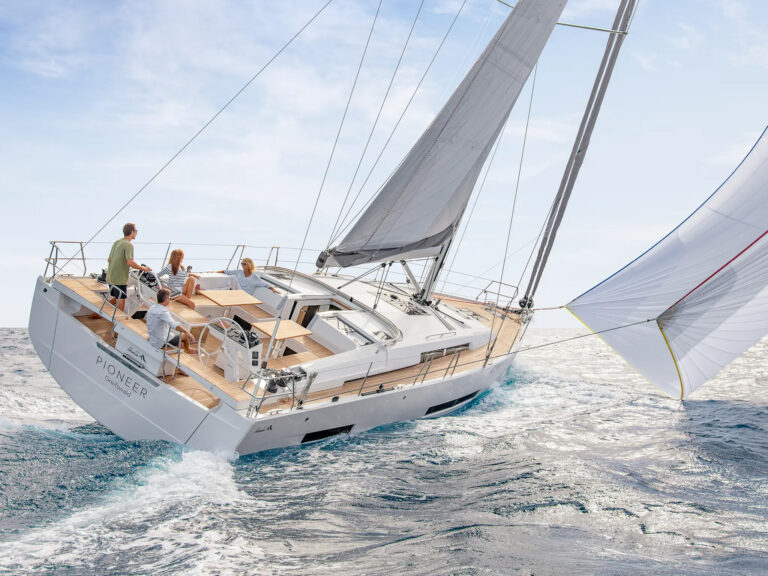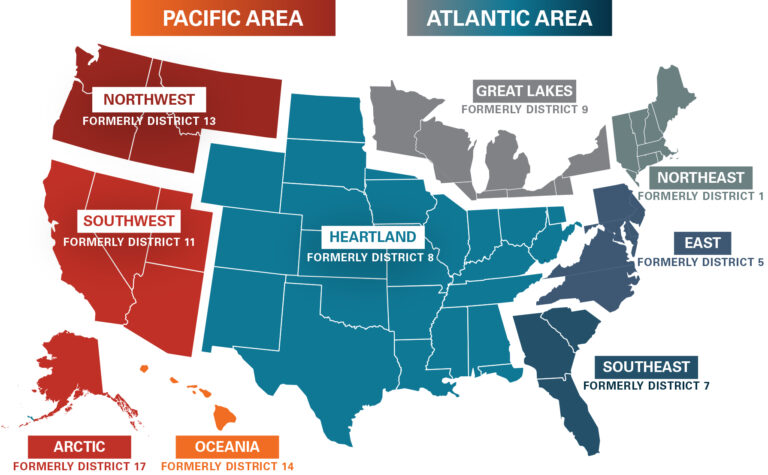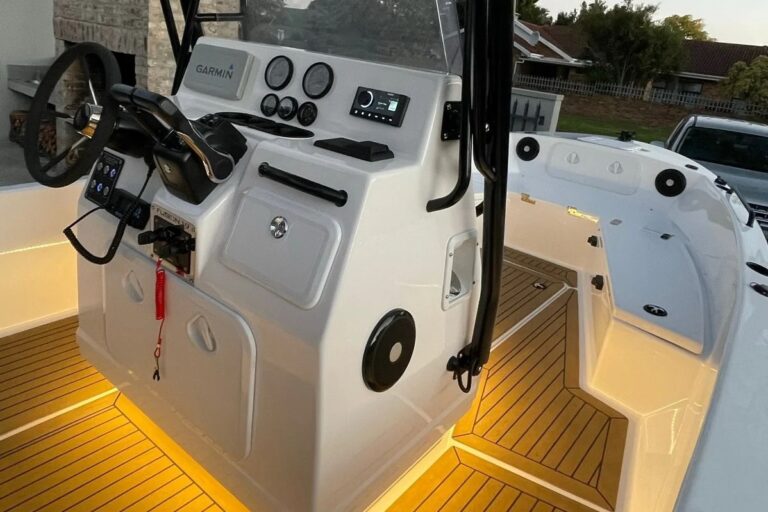Austria-based Silent-Yachts is building on its line of solar-powered catamarans with a move into the tourism industry called Silent-Resorts.
Silent-Resorts will utilize the builder’s yachts, starting with 60- and 80-foot models, as the basis for resorts with “floating sustainable villas.” In less than 18 months, the company says, it can create a fully reversible beach development as an alternative to traditional resorts.

The whole setup would run on solar energy, including an onshore pool, restaurant, clubhouse gymnasium, spa and beachfront guest suites. The suites would be in addition to boats themselves being used as accommodations. Guests could stay on the boats at the dock, use the boats for day trips, or combine land and boat reservations.
“The project we’re working on in the Bahamas has four-bedroom villas, which will mirror the capacity of the yacht, so you could spend a week on the yacht and week on the villa,” says Victor Barrett of TrueDesign Ltd., which is partnering with Silent-Yachts on the project.
Barrett was working in the Caribbean to build villas and beach clubs when the Covid-19 pandemic struck. His project was stopped, government shutdowns began, and he found himself trapped. “I was stuck on a little island with about 250 people,” he says. “The ferry started not running. It was getting nasty.”
He thought about how a sustainable island resort might look, then reached out to Silent-Yachts founder and CEO Michael Köhler. “Michael’s yachts have complete solar capacity, batteries, watermakers, electronics — everything,” Barrett says. “In the hospitality world, a Silent-Yacht is like a completely movable villa.”

And the yacht can be plugged into a shoreside power grid to use excess solar power that the yacht generates. “It’s a pretty disruptive technology because all of a sudden we can create a resort as fast as we can get the boats,” Barrett says.
Traditional vacation destinations are the best place to make use of this technology, Köhler says. “Wherever there is a beautiful destination you want to go with a beach, you got sun,” Köhler says. “Very rarely are people searching for dark and rainy places to spend their holidays. They are searching for sunny places at sunny times, and these are the very best places for our solar panels and our technology.”
Köhler sees the Silent-Resorts concept as a continuation of the thinking that made Silent-Yachts a reality. It’s not about reinventing the wheel, he says. It’s about using components such as solar panels, batteries and electric motors in a different way to gain more energy efficiency.
That type of thinking has been successful for the boat brand, especially during the pandemic. “We have never sold so many boats in such a short time as the last six months,” Köhler says, adding that sales in 2020 accounted for half of the company’s 30 total sold yachts. He cites an awakening among consumers where self-reliance and independence from fossil fuels are driving business. “They are finding out that our boats are one of the best around to handle this crisis.”

Silent boats are designed to minimize incoming heat, which in turn minimizes the amount of power needed for climate control. The company’s catamarans, for instance, do not have inclined windows forward, as other catamarans do. “They are beautiful to watch the sky or sun or stars at nighttime but heat up the saloon incredibly, so you need a huge amount of power to get rid of the dead heat,” Köhler says.
With the design changes and attention to insulation, Silent-Yachts can use solar power to cruise at speeds similar to traditional trawlers, with virtually unlimited range, zero emissions and near-total silence. A 64-footer, he says, crossed the Atlantic in January 2018.
Notably, all the models between 55 and 80 feet are catamarans. “The catamaran design was a necessity,” Köhler explains. “A monohull won’t have the space for the solar panels.”
He adds that the best size from an efficiency standpoint are the smaller “matchbox” models. Simply put, the solar panel area grows by square units and the weight of a boat grows by cubic units. Basically if you double the length and beam of a boat, you get four times more solar panels, but the weight can increase could be eight, 10, 12 or more times. “The bigger the boat, the less favorable the ratio between the solar harvesting and the weight will become. The smaller the boat, the easier,” Köhler says. The new Silent-Yachts 60- and 80-footers will hit the proper combination.

Bringing that type of efficiency to resort creation is the goal of the Silent-Resorts project. The plan is to start in the Bahamas in early 2021, with a setup that includes four land-based villas and multiple boats. “The pandemic is paradigm-shifting,” Barrett says. “People will likely look for more remote and less-crowded accommodations, and more exclusive experiences and locations. I don’t think I want to be on a mega cruise ship or a 500-room hotel for a while.”
If the concept works, it could pave the way for a future in which boaters at marinas could sell energy from their boats back to the grid. “It’s funny today because it sounds like a joke,” Köhler says. “But in future years, it could be common that you can supply the grid in a marina with energy.”
This article was originally published in the November 2020 issue.











